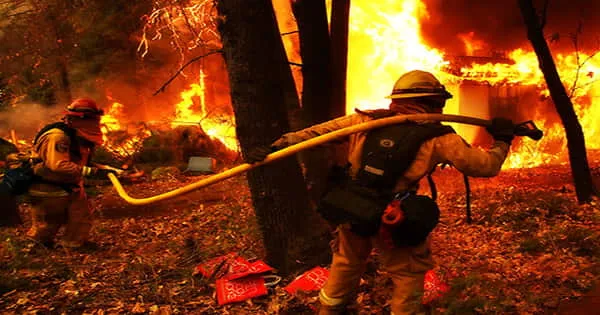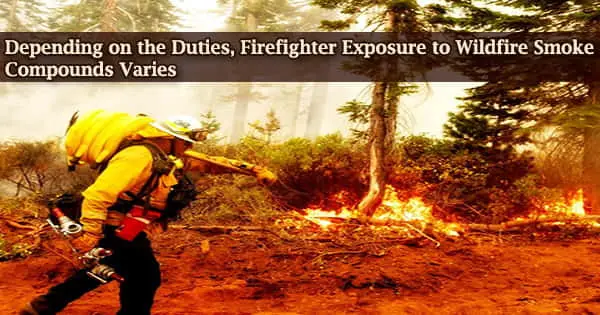Wildfires flare throughout the western United States every summer, and wildland firefighters are tasked with putting them out. However, they absorb smoke and all of the substances included in it, which can be dangerous in high doses.
Researchers have now analyzed the level of particulate matter and volatile organic compounds (VOCs) surrounding firefighters actively fighting fires, finding the highest exposures among hotshot teams and those establishing firebreaks, according to ACS’ Environmental Science & Technology.
The majority of photos of wildland firefighters show them covered in black soot, or particulate matter, which they’re inhaling along with a mixture of other compounds in smoke.
Inhaling particulate matter has been linked to respiratory issues like asthma and chronic obstructive pulmonary disease, and experts believe that VOCs in wildfire smoke may exacerbate these difficulties.
However, because of the severe work environment, the various crew types, and the range of fire suppression operations, getting precise estimates of firefighters’ exposure to these contaminants is difficult.

Elite hotshot crews, for example, are on the front lines battling the hottest zones, while other workers may work in less intense portions of the fire’s perimeter or use long hoses to supply water and foam to remote places.
Kathleen Navarro and colleagues wanted to see how different types of firefighters were exposed to particulate matter and volatile organic compounds (VOCs). Air samplers were attached to wildland firefighters’ equipment, which they used when responding to big fires across the western United States.
The team next calculated exposures to three potentially dangerous VOCs, acrolein, benzene, and formaldehyde, based on the amount of particulate matter collected over a 14-hour shift.
All individuals’ single-shift exposures to these chemicals were found to be within Occupational Safety and Health Administration standards.
For some of the firefighters, however, the levels of particulate matter and formaldehyde were higher than the shift-averaged guidelines of the National Wildfire Coordinating Group and the National Institute for Occupational Safety and Health.
Hotshot crews, firemen establishing firebreaks (large gaps in vegetation to block a fire from spreading), and firefighters battling blazes in the Pacific Northwest were among those exposed to the greatest levels of pollution.
Finally, the researchers asked the volunteers to rate their smoke exposure on a scale of one to ten, and the results matched the detected particulate matter exposures. To preserve the health of wildland firefighters, the researchers recommend that firefighters’ exposure to smoke be reduced whenever possible.
This could involve including self-reporting of exposure and rotating workers from duties that are exposed to smoke and its contaminants on a regular basis to tasks that are less smokey.





